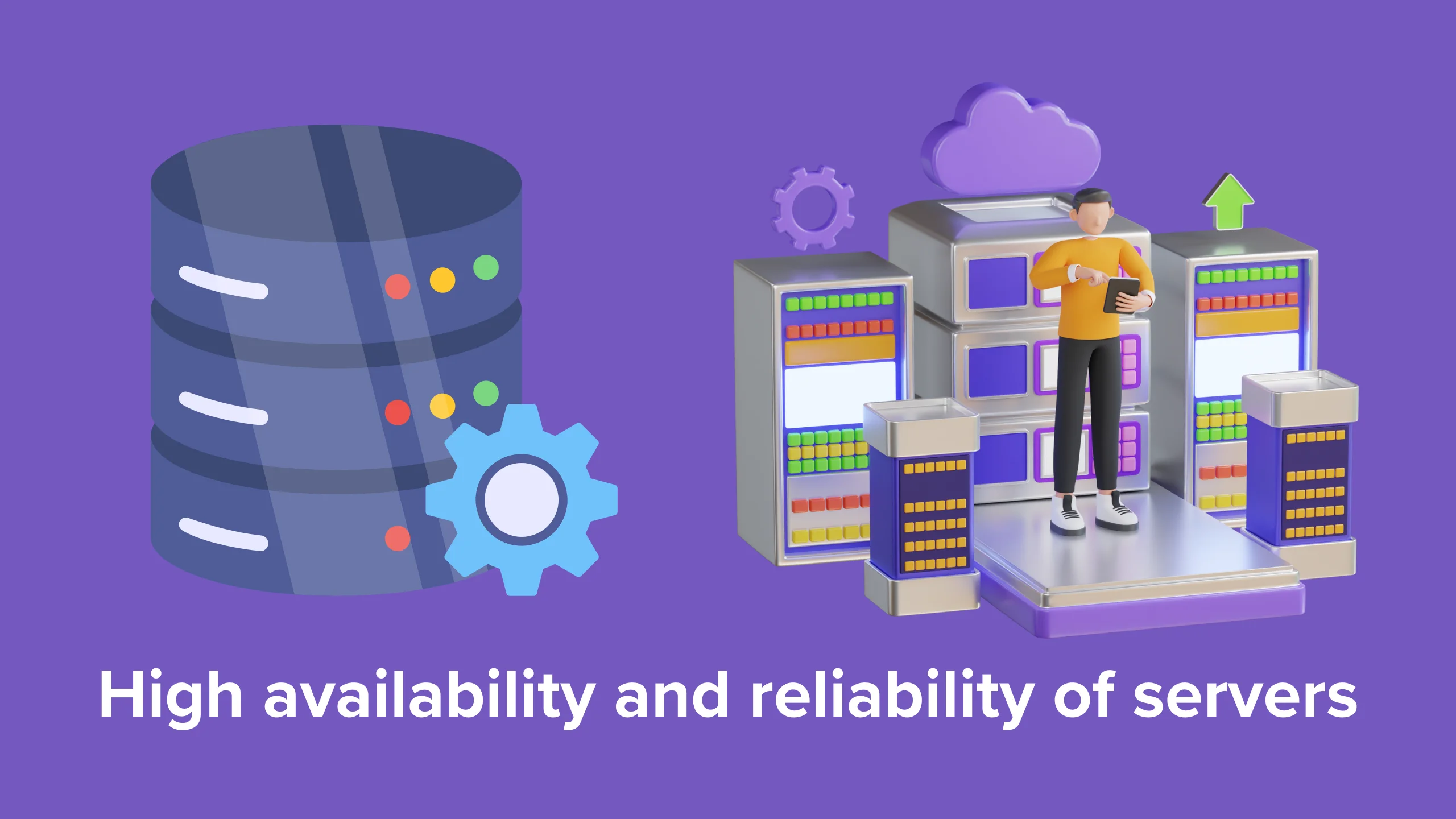Introduction
In the competitive realm of online gaming, efficient load balancing and server management play pivotal roles in the success of top poker game development companies. Ensuring seamless gameplay experiences demands robust strategies for distributing workload across servers and maintaining optimal performance. By implementing sophisticated load balancing techniques, these companies achieve high availability and responsiveness, critical for engaging large player bases. Effective server management involves meticulous monitoring, scaling resources dynamically, and preemptive maintenance to prevent disruptions. The synergy between load balancing and server management not only enhances reliability but also supports scalability as poker game apps grow in popularity. Top poker game development company prioritize these aspects to deliver unparalleled gaming experiences, setting benchmarks in the industry.
What is load balancing, and why is it essential for poker game apps?

Load balancing is a critical technique used in network and server infrastructure to distribute incoming traffic across multiple servers efficiently. It ensures optimal resource utilization, maximizes throughput, minimizes response times, and enhances fault tolerance. For a top-notch poker gaming platform or poker game developer, implementing robust load balancing is crucial for several reasons:
Scalability:
A top-notch poker gaming platform must be able to handle fluctuations in traffic seamlessly, especially during peak times such as tournaments. Load balancing allows the platform to scale horizontally by adding more servers as needed, ensuring that performance remains high and responsive for all players.
High Availability:
Players expect a top-notch poker gaming platform to be available 24/7 without interruptions. Load balancing helps achieve high availability by distributing incoming requests across multiple servers. If one server experiences issues, others can handle the load, minimizing downtime and ensuring uninterrupted gameplay.
Performance Optimization:
Load balancing optimizes performance by directing players’ requests to servers that have the capacity and proximity to respond quickly. This ensures that players experience fast response times and smooth gameplay, which is essential for maintaining a top-notch reputation in the competitive gaming market.
Fault Tolerance:
To maintain its top-notch status, a poker game developer needs to ensure its platform is resilient to server failures or traffic spikes. Load balancers detect and redirect traffic away from failed servers to healthy ones, thereby improving overall system reliability and minimizing the impact of potential disruptions.
Security:
Load balancers can enhance security by acting as a barrier between incoming traffic and the server infrastructure. They can enforce security policies, such as filtering out malicious traffic or preventing DDoS attacks, which is crucial for protecting sensitive player data and maintaining trust in a top-notch gaming platform.
By integrating effective load balancing strategies, a top-notch poker gaming platform or poker game developer can deliver a superior gaming experience characterized by reliability, performance, and security. This not only attracts and retains players but also establishes a reputation for excellence in the competitive gaming industry.
Effective load balancing strategies for poker game apps

Effective load balancing strategies for poker game apps are crucial to ensure smooth gameplay, high availability, and optimal performance for players. Here are some strategies specifically tailored for poker game apps:
1. Session Affinity (Sticky Sessions):
Maintain session affinity (or sticky sessions) so that once a player connects to a game server, subsequent requests from that player are routed to the same server. This is crucial for poker games where players need continuous connections and state throughout a game session. Implementing this strategy is vital for a poker game development firm to ensure seamless gameplay experiences.
2. Application-aware Load Balancing:
Use load balancers that are aware of the specific requirements of poker game traffic. For example, prioritize low-latency responses for actions like betting or folding, which require real-time responsiveness.
3. Geolocation-based Load Balancing:
Utilize geolocation-based load balancing to route players to servers that are closest to their physical location. This reduces latency and improves overall responsiveness, which is critical for maintaining a smooth gaming experience.
4. Dynamic Scaling:
Implement dynamic scaling of servers based on real-time traffic patterns. Use auto-scaling features provided by cloud providers or custom scripts that monitor server load and automatically add or remove servers as needed.
5. Health Checks and Monitoring:
Regularly monitor the health and performance of game servers. Load balancers should perform health checks on servers to detect issues such as high CPU usage, memory leaks, or network latency. Unhealthy servers should be temporarily removed from the load balancing pool until they recover.
6. Failover and Redundancy:
Ensure redundancy and failover mechanisms to handle server failures gracefully. Load balancers should be configured to redirect traffic away from failed servers to healthy ones automatically. This minimizes downtime and ensures high availability for players.
7. Security Considerations:
Implement security measures such as SSL termination at the load balancer to encrypt traffic between players and servers. Use Web Application Firewalls (WAFs) or intrusion detection systems (IDS) to protect against DDoS attacks and other security threats.
8. Caching and Content Delivery Networks (CDNs):
Utilize caching mechanisms and CDNs for static assets (like images, CSS, and JavaScript files) to offload traffic from game servers. This improves overall performance and reduces the load on backend servers.
9. Load Testing and Capacity Planning:
Conduct regular load testing to simulate peak traffic conditions and ensure that the load balancing setup can handle the expected number of concurrent players. Use the results to fine-tune scaling policies and optimize server configurations.
10. Continuous Optimization:
Continuously optimize load balancing configurations based on performance metrics and player feedback. Regularly review and adjust load balancing algorithms, server capacities, and geographical distribution to improve overall reliability and player experience.
By implementing these effective load balancing strategies, poker game apps can ensure high performance, scalability, and reliability, ultimately delivering a seamless and enjoyable gaming experience for players.

How can load balancing contribute to enhancing the security of poker game apps?

Load balancing can contribute to enhancing the security of poker game apps in several ways:
1. Resilience to DDoS Attacks:
Load balancers can distribute incoming traffic across multiple servers. This distribution helps in mitigating Distributed Denial of Service (DDoS) attacks by spreading the attack traffic and preventing any single server from being overwhelmed. This ensures that the poker game app remains accessible and operational even during an attack.
2. Session Persistence:
Some load balancers can maintain session persistence (or stickiness), ensuring that once a user establishes a session with a specific server, subsequent requests from that user are directed to the same server. This is important for poker games where session integrity is critical. It prevents session hijacking or manipulation attempts that could occur if sessions were not properly managed.
3. SSL Termination and Encryption:
Load balancers can offload SSL/TLS encryption and decryption tasks from the game servers. This centralizes and simplifies the management of SSL certificates and configurations. It also ensures that communications between clients and servers remain secure, protecting against eavesdropping and man-in-the-middle attacks.
4. Centralized Logging and Monitoring:
Many load balancers provide centralized logging and monitoring capabilities. This allows administrators to closely monitor traffic patterns, identify potential security threats or anomalies, and take proactive measures to safeguard the application.
5. High Availability:
Load balancers can be configured for high availability setups with failover mechanisms. In case one load balancer fails, another one takes over seamlessly, ensuring continuous availability of the poker game app. This resilience reduces the risk of downtime due to technical failures or attacks.
6. Traffic Filtering and Control:
Advanced load balancers can perform traffic filtering based on various criteria such as IP addresses, geographic locations, or even specific types of requests. This capability helps in blocking malicious traffic or requests that could potentially exploit vulnerabilities in the poker game app.

What measures should be taken to ensure high availability and reliability of servers?

Ensuring high availability and reliability of servers involves implementing a combination of hardware, software, and operational strategies. Here are some key measures to consider:
1. Redundancy
- Hardware Redundancy: Use multiple servers, power supplies, network devices, and storage systems. Redundant components can take over if a primary component fails.
- Geographic Redundancy: Distribute servers across multiple geographic locations to protect against site-specific failures.
2. Load Balancing
- Load Balancers: Use load balancers to distribute traffic evenly across multiple servers, preventing any single server from becoming a bottleneck or point of failure.
3. Clustering
- Server Clustering: Group servers into clusters to work together and provide failover capabilities. If one server in the cluster fails, others can take over its workload.
4. Regular Backups
- Data Backups: Regularly back up data to ensure that it can be restored in case of data loss or corruption.
- Configuration Backups: Regularly back up server configurations to quickly restore settings and operational parameters.
5. Disaster Recovery Planning
- Disaster Recovery Sites: Maintain off-site disaster recovery centers that can be quickly activated in case of a major failure at the primary site.
- Regular Drills: Conduct regular disaster recovery drills to ensure that the plan is effective and that all personnel are familiar with their roles.
6. Monitoring and Alerting
- Real-time Monitoring: Implement real-time monitoring for server performance, network traffic, and application health.
- Automated Alerts: Set up automated alerts to notify administrators of potential issues before they lead to server downtime.
7. High Availability Software Solutions
- Database Replication: Use database replication to ensure that data is available from multiple sources.
- Virtualization and Containers: Use virtualization and containerization to quickly spin up new instances of applications and services.
8. Service Level Agreements (SLAs)
- Vendor SLAs: Ensure that SLAs with service providers (e.g., ISPs, cloud providers) guarantee a high level of uptime and reliability.
Internal SLAs: Set and monitor internal SLAs to maintain high standards of performance and availability.

Conclusion
In conclusion, mastering load balancing and server management stands as a cornerstone for the success and sustainability of poker game apps in today’s competitive online gaming industry. These crucial practices ensure that companies can effectively handle the complexities of fluctuating player traffic, maintaining seamless gameplay experiences and high availability. By prioritizing reliability and scalability, top poker game development companies not only meet but exceed player expectations, fostering long-term loyalty and satisfaction. As technology evolves, adherence to best practices in load balancing and server management remains pivotal, enabling companies to innovate swiftly and adapt to emerging trends. Embracing these principles not only enhances technical resilience but also empowers companies to drive industry standards forward, setting new benchmarks for performance and user experience. With continual optimization and proactive strategies, these companies are poised to lead the future of poker gaming, offering immersive, stable, and engaging experiences that captivate players worldwide.




















